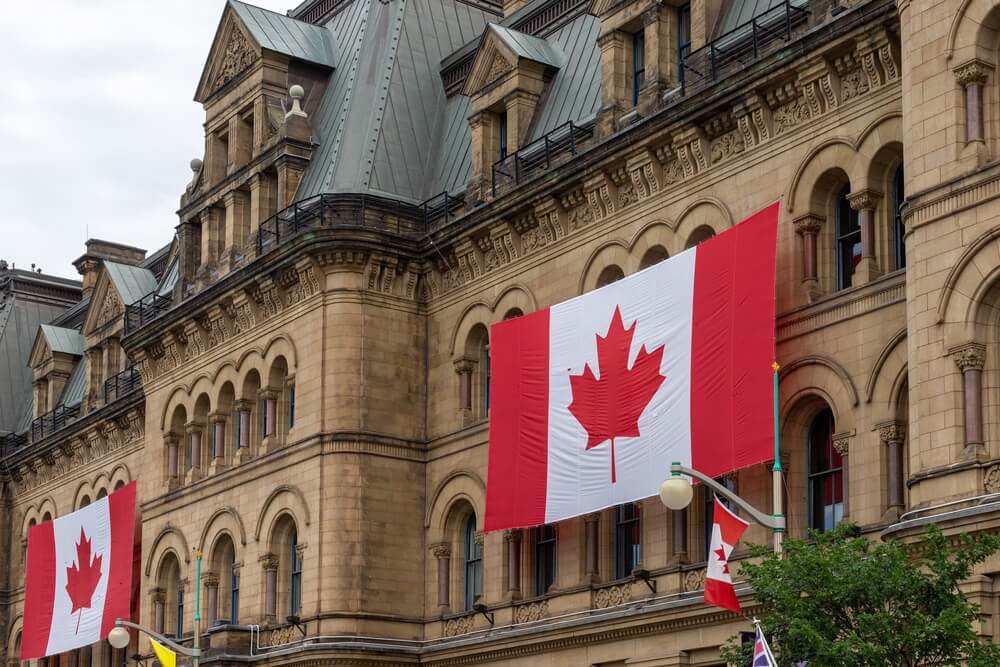Prime Rate Canada
Prime rate is the basis for pricing variable-rate mortgages in Canada, along with a variety of other financial products.
History of Canada's prime rate
First, what is the prime rate?
The prime rate is the benchmark interest rate banks use as a reference to decide how much to charge for loans.
The prime rate goes up or down when the Bank of Canada (BoC) changes its main interest rate, but it is always a bit higher than the central bank's.
Variable rate mortgages and lines of credit are especially affected by changes to the prime rate.
Each bank can set its own prime rate, but most big banks in Canada have similar benchmark rates to improve competitiveness.
Canada’s prime rate has moved significantly over the past 70 years, both up and down.
It reached an all-time high of 22.75% in August 1981. This occurred when the BoC began frantically hiking overnight rate to control runaway inflation, which wreaked havoc on the economy. As a result, many homebuyers faced rates of more than 20% on their mortgages.
Canada’s record low prime rate was 2.25%, which occurred in April 2009, at the tail end of the 2007-2008 economic recession (also known as the Global Financial Crisis), when the Bank of Canada suddenly dropped its lending rates to near-zero to stimulate the faltering economy.
The longest period that Canada’s prime rate remained unchanged was between September 2010 and January 2015, when it sat at 3.00%.
It also remained steady more recently, during the COVID-19 pandemic (from April 2020 to March 2022), at 2.45%.
In June 2024, however, the prime rate was the highest it had been in decades, sitting at 6.95%. That's even higher even than what it was during the 2007 financial crisis (it peaked at 6.25% in 2007).
The silver lining is that prime rates are finally declining, aligning with the Bank of Canada's trend of rate cuts, which have brought inflation under control.
- Current prime rate: 4.95%
- Last change: Jun. 4, 2025

Since the early 90’s, the average rate hike cycle has resulted in prime rates that peaked about 2.30% above the low that preceded them. So, if you have a variable-rate mortgage, you should expect that your rate could go up by around 2% based on past patterns of rate hikes.
Many point to the extreme increases in the late 1970’s and early 1980’s – when double digit interest rates on mortgages were common – as a warning of what’s possible.
However, this occurred long before the introduction of inflation targeting in 1991, a strategy the Bank of Canada implemented to help maintain lower and more stable interest rates.
In the world we live in now, debt-gorged economies could not withstand double-digit interest rates. Nor could governments with their billions in debt service obligations.
The steepest prime rate hikes since inflation targeting was introduced occurred between a 16-month period beginning in early 2022.
Over a span of less than 12 months, the prime rate surged by 4.25%, equivalent to 425 basis points (bps), rising from 2.45% in March 2022 to 6.70% by January 2023.
By July 2023, the prime rate had climbed further to an impressive 7.20%, where it stayed steady for nearly a year.
In June 2024, after months of remaining historically high, the prime finally went down to 6.95% after the Bank of Canada cut 25 basis points on its overnight rate.
Over the next four rate announcements, the central bank lowered the key interest rate by a total of 150 bps, with the prime rate moving down by the same amount. By the end of 2024, banks set their prime rates at 5.45%.
The first two rate decisions of 2025 reduced the overnight rate to 2.75%. With inflation within the Bank's target range, further rate cuts may be possible. However, this could change depending on developments in the ongoing trade conflict with the U.S.
As of April 2025, the prime rate sits at 4.95%.
Canada's prime rate forecast 2025
Prime rates move in tandem with the Bank of Canada’s decisions about the benchmark overnight interest rate, which has been cut by 50 bps so far this year. As of April 2025, the prime rate stands unchanged from March at 4.95%.
With rates trending downward, the general economic outlook suggests improved affordability for borrowers. Inflation has been declining since late 2023 and now stands at 2.3%, comfortably within the BoC’s target range of 1 to 3%.
However, the future of Canada’s economy – and the globe’s – remains highly uncertain. The U.S. has alternated between imposing tariffs on trading partners and pausing them at the last minute.
President Trump has maintained tariffs on Canadian energy, aluminum, and automotive exports, showing no sign of lifting them anytime soon. These, combined with our retaliatory tariffs, weakening dollar, and anticipated federal deficit could alter monetary policy.
Despite these challenges, analysts expect at least an incremental 1% reduction in the prime rate over the course of 2025, making the current forecast look like this:
- Estimated prime rate by year-end 2025: 4.45% - 4.70%
When will the prime rate change next?
The prime rate almost always changes when the Bank of Canada raises or lowers its overnight rate.
Also known as the Bank of Canada’s policy rate, key interest rate or target rate, overnight rate is the amount the Bank wants Canada’s largest financial institutions to charge each other when lending and borrowing in the overnight market.
The Bank delivers eight scheduled interest rate decisions per year. As of Apr. 16, 2025, the prime rate sits at 4.95% following the Bank of Canada's 25 bps rate cut in March.
The Bank of Canada can also hold emergency rate meetings in times of economic crisis. It did this last in the spring of 2020, during the COVID-19 pandemic, and before that, during the global financial crisis of 2008. In both cases, the Bank’s emergency rate cuts resulted in reductions to Canada’s prime rate.
The next scheduled date for interest rate announcement is in 2025:
- Wednesday, Jun. 4, 2025
The Monetary Policy Report is published concurrently with the January, April, July and October rate announcements.
All rate announcements occur at 9:45 am EST.
Canada's prime rate (1975 – 2025)
Prime rate typically follows a parallel path with the Bank of Canada’s overnight rate. But this isn’t always the case.
For instance, when the Bank of Canada dropped its overnight target rate twice by 25 basis points (or 50 basis points in total) in 2015, the other banks didn’t follow suit, opting to lower the prime rate by only 0.3% to boost their earnings.
Sometimes, a bank moves its own prime rate unilaterally, as TD Canada Trust did in November 2016. TD decided to hike its mortgage prime rate from 2.70% to 2.85%, forcing its existing variable-rate customers to pay 0.15% above the official prime rate.
The current overnight rate is 2.75%, while the prime rate stands at 4.95%.
Economists from Canada’s largest banks predict at least two more 25-bps reduction to the overnight rate by the end of 2025, with the prime rate to follow. However, it’s possible – though highly unlikely – that the prime rate will not follow suit so readily. For example, banks could opt to reduce their rates by smaller amounts, or not at all.
The following graph shows the movements of Canada’s prime rate over the last 40 years.
Frequently asked questions about Canada’s prime rate
Need more information on Canada's prime rate? We have you covered.
What is the prime rate?
Prime rate is the base interest rate used by most financial institutions to price floating-rate lending products. This includes things like variable-rate mortgages, personal and home equity lines of credit (HELOCs), commercial loans and credit cards.
Each lender sets its own prime rate, but they usually match the benchmark prime rate calculated by the Bank of Canada.
What is Canada’s current prime rate?
Canada’s prime rate is 4.95%, last changing in March 2025.
How is Canada’s prime rate calculated?
The country’s official prime rate is calculated by the Bank of Canada using a mode average of the Big Six banks’ individual prime rates.
This rate is published by the Bank of Canada on a weekly basis, but typically only changes following adjustments to the Bank's overnight rate.
For example, if the Bank of Canada cuts its overnight rate, the big banks typically announce reductions to their individual prime rates not long after the Bank's decision.
If a majority of the big banks adjust their individual prime rates, Canada’s official prime rate – or benchmark rate – will also change accordingly
How does the prime rate affect variable mortgage rates?
Most lenders will quote their variable (or 'floating') rates as either a premium or a discount in relation to prime rate.
For example, you’ll generally see closed variable rates advertised at a discount, like 'prime – 0.60%.'
Open variable rates, which allow the borrower to repay the loan as quickly as they want without penalty, are typically priced much higher and are therefore quoted at a premium to prime rate, such as 'prime + 1.50%.' This goes for most HELOCs as well.
As the prime rate changes, a floating-rate borrower’s interest rate fluctuates. But that doesn’t necessarily mean their monthly payments will change.
In the case of variable-rate mortgages, borrowers can get a fixed-payment variable rate. That means when prime rate rises, the monthly payment remains the same, but the amount of the payment going towards interest increases. If interest rates fall, someone with a fixed-payment mortgage will see the interest portion of their payment decline, while more will go towards reducing the principal.
By contrast, someone with an 'adjustable-rate' mortgage will have payments that move up and down with prime rate. In other words, the amount of principal being paid never decreases, regardless of what prime rate does. That keeps your amortization (the time required to pay off your mortgage) on track.
What causes the prime rate to change?
The number one factor driving changes to prime rate is inflation expectations. The Bank of Canada is required to set monetary policy to achieve a target inflation rate of 2%. It typically does this by increasing or decreasing its overnight rate.
When its economic models suggest inflation is falling materially below the 2% target, the Bank of Canada will cut its overnight rate to stimulate more borrowing, economic activity and inflation. That generally leads to a lower prime rate.
When the Bank expects inflation to meaningfully exceed the 2% target, it typically hikes its overnight rate, leading to a higher prime rate.









